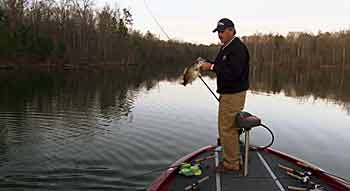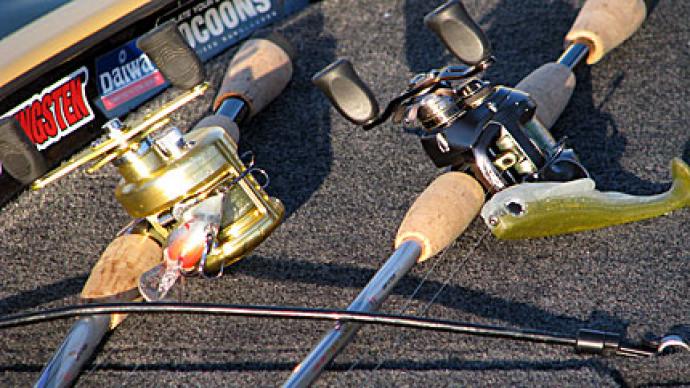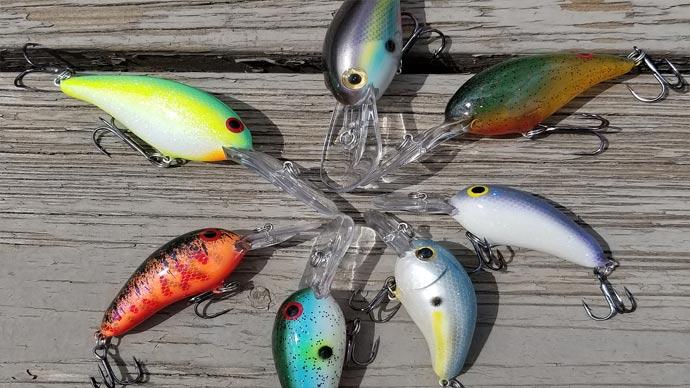
There’s not a better bait in your tackle box than a crankbait for catching aggressive fall bass roaming over structure.
These “cast-and-crank” lures can be fished effectively in water 20 feet or less and cover an area faster and more thoroughly than most lures. However, crankbaits can’t perform miracles on just a few casts. Like any lure, you have to give them a fair shot before eliminating them from that day’s arsenal.
Crankbaits come in various sizes, shapes and running depths. There are tight-wiggling crankbaits and wide-wobbling crankbaits, and each tends to produce better under specific circumstances. I prefer tight wigglers in late fall and early spring when the water is clear, cold and bass are more fickle. During summer and early fall, wide wobblers tend to produce better, especially in stained water.
You can tell the difference by looking at the bait. Tight-wiggling crankbaits have narrow bodies and lips. Crankbaits with broader bills and fatter bodies have wider wobbles. Because they displace more water, they send out louder signals that help bass locate the lure better in dark or stained lakes.
Line size can make a difference in how effective these lures are. I’ve discovered that small, thin baits fish better on 10-pound test or less. On the other hand, heavier line doesn’t seem to hurt the deep-running, wide-wobbling baits. I have no problem using 17- to 20-pound test with these baits.
Usually, bass want a lure that runs near the bottom. If that doesn’t produce, I’ll switch to a deeper diver and allow it to bang along the bottom.
Many people make a big deal about color, but you can get by with basic shad colors and fire tiger. Fire tiger is a relatively universal color that you should never ignore.
Most anglers know that crankbaits are deadly when bass are on points or creek ledges, but don’t think of them when fishing near stumps, trees, bushes or logs around the shoreline. Admittedly, worms and spinnerbaits are better designed for fishing cover, but I’ve seen days when bass prefer crankbaits over all other lures. When I think bass are holding tight to wood and need a wake-up call, I’ll bang a crankbait alongside fallen trees and logs. This method often triggers violent strikes.
During a tournament several years ago, I got whipped by an angler fishing a large crankbait through deep trees. I was slow-rolling a spinnerbait but he was fishing five trees for every one I fished. That taught me to never overlook a crankbait when fishing cover in less than 20 feet of water.
You hear a lot of anglers argue about which is better, wood or plastic, but they both have a place in my tackle box. When fishing around thick cover, a wooden bait will rise more quickly, avoiding snags. Plastic crankbaits are better for fishing open water because they’ll suspend like baitfish when you hesitate the retrieve.
The angler who puts some thought into his crankbait selection is going to be more successful than one who doesn’t. They’re extremely versatile lures and on some days will catch bass when all others fail.
You can find more articles, quick tips and much more at HankParker.com.




